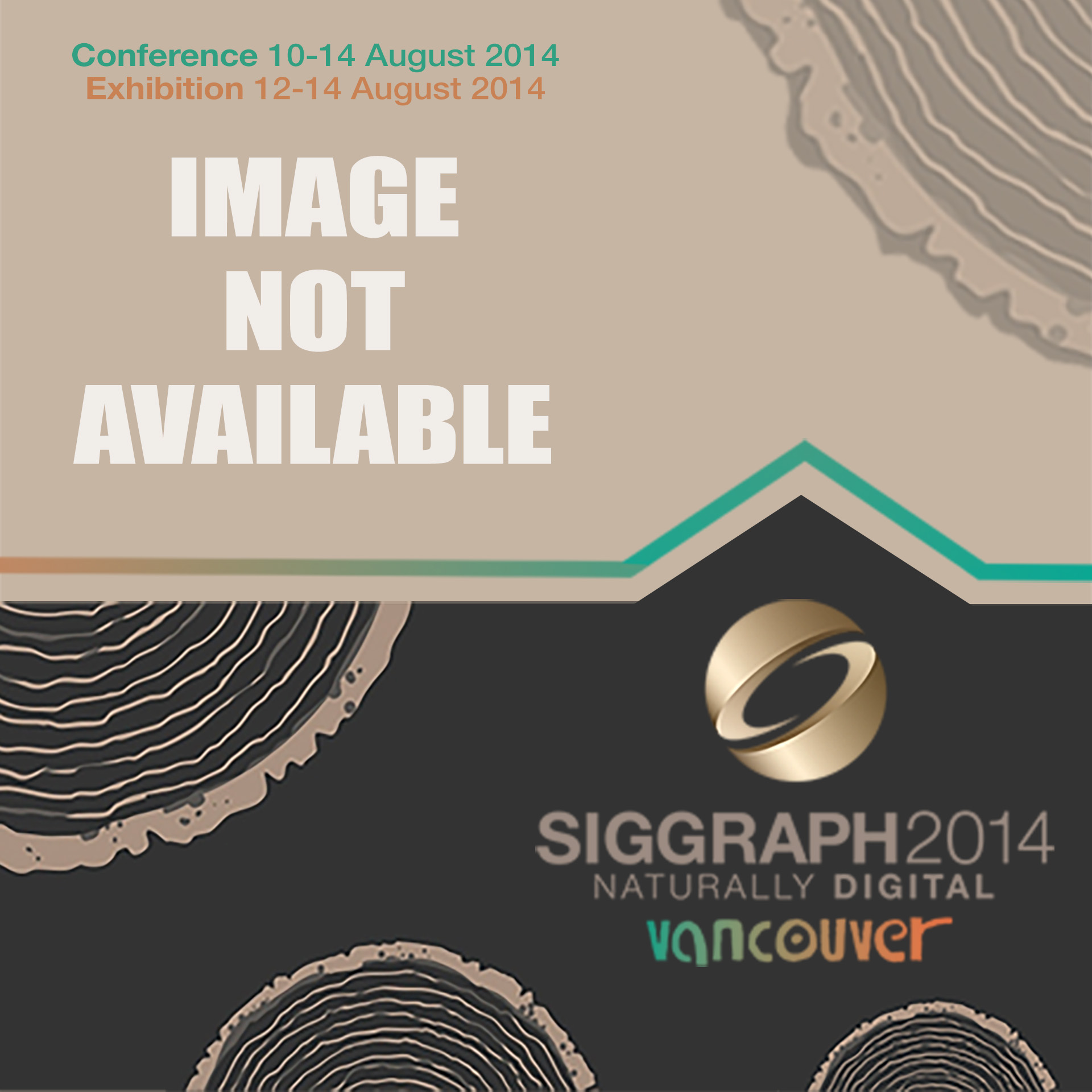“The Aesthetics of Liminality: Augmentation as Artform” by Lichty
Conference:
Type(s):
Title:
- The Aesthetics of Liminality: Augmentation as Artform
Presenter(s)/Author(s):
Abstract:
From ARToolkit’s emergence in the 1990s to the emergence of augmented reality (AR) as an art medium in the 2010s, AR has developed as a number of evidential sites. As an extension of virtual media, it merges real-time pattern recognition with goggles (finally realizing William Gibson’s sci-fi fantasy) or handheld devices. This creates a welding of real-time media and virtual reality, or an optically registered simulation overlaid upon an actual spatial environment. Commercial applications are numerous, including entertainment, sales, and navigation. Even though ARbased works can be traced back to the late 1990s, AR work requires some understanding of coding and tethered imaging equipment. It was not until marker-based AR, affording lower entries to usage, as well as geo-locational AR-based media, using handheld devices and tablets, that augmented reality as an art medium would propagate. While one can argue that AR-based art is a convergence of handheld device art and virtual reality, there are intrinsic gestures specific to augmented reality that make it unique. The author looks at some historical examples of AR as well as critical issues of AR-based gestures such as compounding the gaze, problematizing the retinal, and the representational issues of informatic overlays. This generates four gestural vectors, analogous to those defined in “The Translation of Art in Virtual Worlds,” which is examined through case studies. From this, a visual theory of augmentation will be proposed.
References:
1. Lichty, Patrick, ?The Translation of Art in Virtual Worlds,? The Oxford Handbook of Virtuality (New York: Oxford University Press, 2014), 445.
2. Craft, Catherine, An Audience of Artists: Dada, Neo-Dada, and the Emergence of Abstract Expressionism (Chicago: University of Chicago Press, 2012), 202.
3. Massumi, Brian, with Arne De Boever, Alex Murray, and Jon Roffe, ??Technical Mentality? Revisited: Brian Massumi on Gilbert Simondon,? Parrhesia No. 7, 37 (2009).
4. Caudell, T.P., and D.W. Mizell, ?Augmented Reality: An Application of Heads-Up Display Technology to Manual Manufacturing Processes,? Proceedings of 1992 IEEE Hawaii International Conference on Systems Sciences (1992), 659?669.
5. Lichty, Patrick, ?The Translation of Art in Virtual Worlds,? The Oxford Handbook of Virtuality (New York: Oxford University Press, 2014), 444?462.
6. Lichty, Patrick, ?Art in the Age of Dataflow,? Variant Analyses: Interrogations of New Media Art and Culture (Amsterdam: Institute for Networked Culture, 2013), 143?157.
7. Frank, Joseph, ?Spatial Form in Modern Literature,? The Idea of Spatial Form (New Brunswick: Rutgers University Press, 1991).
8. Hughes, Russell, “The Reversible Eschatology of Arakawa and Gins,” INFLeXions No. 6, 80?102.
9. Berry, Rodney, and Ivan Poupyrev, Augmented Groove, <www.mic.atr.co.jp/sspace/> (1999), ATR Research Labs, Kyoto.
10. Williams, Matthew, ?Gibson?s Bridge Trilogy,? <storiesbywilliams.com/2012/02/05/gibsons-bridgetrilogy/> (2012).
11. Crypton, Inc., Vocaloid, <www.vocaloid.com> (2014).
12. Verrier, Richard, ??Virtual 2Pac? Image Wins Award for Digital Domain,? Los Angeles Times Online, June 25, 2012, <http://articles.latimes.com/2012/jun/25/entertainment/ la-et-ct-digital-domain-tupac-20120625>.
13. Skwarek, Mark, et al., Occupy Wall Street AR, <aroccupywallstreet.wordpress.com/> (2011).
14. Poladian, Mark, ?Virtual Masks Could Be the Future of Halloween Costumes, Thanks to Augmented Reality Programs,? International Business Times, October 29, 2013, <www.ibtimes.com/ virtual-masks-could-be-future-halloween-costumes-thanks-augmented-reality-programs-1445884>.
15. Mills, Matt, and Tamara Roukaerts, ?Image Recognition That Triggers Augmented Reality,? <www. ted.com/talks/matt_mills_image_recognition_that_triggers_augmented_reality.html> (2012).
16. VML, Mobile Medic, <australia.vml.com/clients/australian-defence-force> (2012).
17. Caudell, T.P., and D.W. Mizell, ?Augmented Reality: An Application of Heads-Up Display Technology to Manual Manufacturing Processes,? Proceedings of 1992 IEEE Hawaii International Conference on Systems Sciences (1992), 659?669.
18. Holmes, Kevin, ?Hermaton: Enter the Grid Is an Augmented Reality Architectural Maze,? The Creators Project, <thecreatorsproject.vice.com/blog/ihermaton-enter-the-gridi-an-augmented-realitymaze> (2013).
19. Darf Design (Sahar Fikouhi and Arta Toulami), <www.darfdesign.com/132812/1318702/gallery/ hermaton> (2013).
20. Lichty, Patrick, ?The Cybernetics of Performance and New Media Art,? Leonardo Vol. 33, No. 5, 351?354 (October 2000).
21. Karlin, Susan, ?Rethinking Public Space: B.C. Biermann?s Augmented Reality Urban Art,? Fast Company, <www.fastcocreate.com/1682447/rethinking-public-space-bc-biermann-s-augmented-realityurban-art> (2011).
22. Lichty, Patrick, Into the Wild/Virtual Kenai (AR Tapestries), <www.voyd.com/sculpture_digital_ tapestries.html> (2014).
23. Crutzen, P.J., and E.F. Stoermer, ?The ?Anthropocene,?? Global Change Newsletter 41, 17?18 (2000).
24. alsione svx, Stay with Miku in Augmented Reality, <www.youtube.com/ watch?v=yRWKFauD6_w&list=UUVUW_vUhHUd_UEtzEysNtCQ&feature=c4-overview> (2013).
25. Tackett, Rachel, ?Wanna Sleep Next to Hatsune Miku? There?s an App for That!? Rocketnews24.com, <en.rocketnews24.com/2013/10/08/wanna-sleep-with-hatsune-miku-theres-an-app-for-that/> (2013).
26. Tolentino, Josh, ?Get Miku into Bed with Project Diva F?s AR Gimmickry,? Japanator, <www. japanator.com/get-miku-into-bed-with-project-diva-f-s-ar-gimmickry-23496.phtml> (2012).
27. Sterling, Bruce, ?Patently Untrue: Fleshy Defibrillators and Synchronised Baseball Are Changing the Future,? Wired, <www.wired.co.uk/magazine/archive/2013/10/play/patently-untrue> (2013).
28. Lichty, Patrick, ?Toward a Culture of Ubiquity,? Variant Analyses: Interrogations of New Media Art and Culture (Amsterdam: Institute for Networked Culture, 2013).
29. Gibson, William, Spook Country (New York: Berkley, 2007), 8.
30. Underkoffer, John, ?John Underkoffer: Pointing to the Future of UI,? <www.ted.com/talks/john_ underkoffler_drive_3d_data_with_a_gesture.html> (2010).
31. Sakoff, Hallie, ??Sight?: Short Film Takes Google Glasses to Their Logical Nightmarish End,? Huffington Post, <www.huffingtonpost.com/2012/08/03/sight-short-film_n_1739192.html> (2012).
32. Madrigal, Alexis, ?Bruce Sterling on Why It Stopped Making Sense to Talk About ?The Internet? in 2012,? The Atlantic Online, <www.theatlantic.com/technology/archive/2012/12/bruce-sterling-on-whyit-stopped-making-sense-to-talk-about-the-internet-in-2012/266674/> (2012).
33. Con, Mario, ?Google?s Project Glass: Experience Augmented Reality Through This Video,? Zans Media, <http://zansmedia.com/blog/google/project-glass-one-day-video-augmented-reality-google-xlabs/> (2012).
34. Meta, Inc., A Morning with Meta, <www.youtube.com/watch?v=p049os77zMk> (2013).
35. Lichty, Patrick, ?An Alpha Revisionist Manifesto: White Paper,? Leonardo Vol. 34, No. 5, 443?445 (2001).
36. Miot, Stephanie, ?Atheer Labs Crowdfunds Superhero-Like 3D Smart Glasses,? PC Magazine Online, <www.pcmag.com/article2/0,2817,2428601,00.asp> (2013).
37. Lebkowski, Jon, and Bruce Sterling, ?Topic 473: Bruce Sterling and Jon Lebkowsky: State of the World 2014,? The Well, <www.well.com/conf/inkwell.vue/topics/473/Bruce-Sterling-and-JonLebkowsky-page01.html> (2014).
38. Sterling, Bruce, ?Augmented Reality: Invading the Museum of Modern Art,? Wired, <www.wired. com/beyond_the_beyond/2010/10/augmented-reality-invading-the-museum-of-modern-art/> (2010).
39. Holmes, Brian, Brian Holmes: Profanity and the Financial Markets. A User?s Guide to Closing the Casino (Berlin: Hatje Cantz Verlag, 2012).
40. Ibid.
41. Lichty, Patrick, ?Digital Anarchy, Social Media and WikiLeaks: Or, Skynet Doesn?t Look Anything Like We Thought It Did,? Variant Analyses: Interrogations of New Media Art and Culture (Amsterdam: Institute for Networked Culture, 2013).
42. Tripp, Stephanie, ?Response to Expose, Intervene, Occupy,? <expose-ar.com/?page_id=240> (2012).
43. Szabo, Victoria, and Trudi Abel, Virtual Duke and Digital Durham (versions 1, 2, and 3), <sites.duke. edu/vszabo/projects/virtual-duke-and-durham/> (2010?2012).





